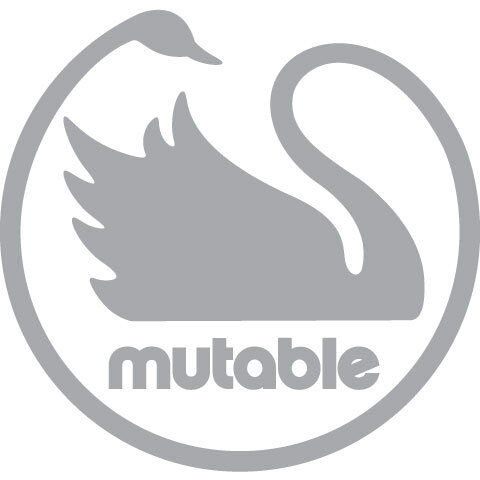Within the first ten seconds of Bode Radio’s Dust Bowl Masquerade, the album defines itself as a jarring fusion of the exotic and the deranged. In the following twenty seconds you find yourself really enjoying yourself. Then the rug falls out from under you, and it continues to fall out from under you, and over you, and around you, until you are seeing sound in a very different very unsettling way. Dust Bowl Masquerade is both a frenetic piece of cut-up electronica as well as a very groove-oriented album from start to finish. I’d like to say it’s what it would sound like if The Books and Aphex Twin had a baby, but this baby belongs in a species all its own.
There’s the light clicks and sudden shifts with lots of sound collage and found audio verbiage, but there’s also the more heavy-handed synth drums of traditional electronica, except here done up in a confusing display of polyrhythmic dexterity. (As well as the more traditional percussion we’re all familiar with from its long history in the annals of classic rock.) Yoffe also performs with FrOG, or Friends Of Gamelan, and composes sacred minimalist-inspired contemporary classical, and you get a sense of these extracurricular activities when listening to the album. Besides Alex Yoffe, Bode Radio also has Spencer Herbert playing bass and the occasional keys, but being familiar with Yoffe’s work, I heard his compositional voice especially in both the precision of the sound-layering, and in these few certain moments when a synth drum sounds like it’s being played in a particularly Indonesian way for example.
My favorite two tracks on the album are the first and the last, which is as it should be. They are the most complete, and the most alluring. The jolting shifts in Birchstab/Masquerade are offset nicely by the heavy-handed kitwork. The feeling of this first song is a slow build into madness. We are entering into Bode Radio’s universe, but the mesmerizing sounds within this introductory chamber of the larger album are experienced like a series of horrific scenes lining a very deep and living diorama that we are slowly sliding through as the song progresses to its final crescendo. This mood continues throughout the entire album. The jolting shifts continue to be offset nicely by the accompanying rhythm. The same hypnotic creepiness. Some of the songs are more challenging, like Charlie~Bird, and many of these songs feel like sketches for future songs. Such as the aforementioned Charlie~Bird, but also Lost Woods and Orchid Limbo.
However. That having been said. This whole album is a hodge podge and mish mash of cultures and sounds, and that some of these songs play like vignettes works perfectly within the larger context. We’re lost in the middle of this barrage. Of indigenous pan pipes and electronic hisses, distortion, appropriated vintage radio-play, all the ephemera of culture and the world outside our culture. All these songs are of a piece, moments on a stage clearly set at the beginning and eerily completed at the end.
I said my two favorite tracks are the first and the last and I thought I would spend my final moments on that last track, because it’s the answer to the riddle this album poses. For the entire first half of the song you are struggling to figure out where it is going. Then it erupts into an all-out emergency right in the middle of the song, and the feeling is that all the little audio vignettes we have been experiencing have been leading up to this moment. This very dirty ugly moment, with the sound in the background like the whine of a siren slowed down, and the drums at first complex and precise and then becoming as simple as a person breathing while they run, that in-out in-out feel, then even this cuts out so all we hear is the dissonant high-pitched squeal like someone flatlining in hell and then even this ends abruptly.
Another aspect of Lewy’s film-work specifically that I find especially interesting is that he often seems to be playing with the idea of a place between the still and the moving image. Most notably, it’s hard to classify his Water series. (These are not yet available to the public, but the one I have seen was a short loop of a very unnatural green CGI water with some dark splotch in the center of it rocking up and down.) But also, with many of his films, the tiny Lewy moving through the otherwise still landscape seems like some obscene bit of vandalism making its way across the page, or like an insect traversing a Mondrian or something—or like a tiny toy figurine come to life within the diorama.
In fact, I would argue, what makes Lewy exciting is specifically that this interplay—his minimalist / pop sensibility, this barren / playfulness dichotomy, as well as the internal / universal sense of his artwork—all works together to create something unclassifiable in toto even if we feel we can clearly classify a piece here or a piece here. To understand Lewy, an audience should peruse his entire portfolio. It is in our confusion at his many distinct visions that we find the artist himself.
Of course, early Lewy was focused primarily on work and the workplace, but throughout his pieces since that time, Lewy steadily stripped away everything, pulling back to a kind of abstract noir [the Suburban Noir series] to then a purely empty virtual world [Empty Space] and then pure meaninglessness of form [Chair, Wire] but with Bigfoot Island, we see a more personal world at the center of all of this abstraction, and now we’ll just have to wait and see.


